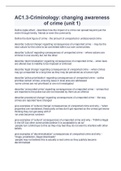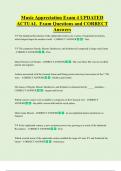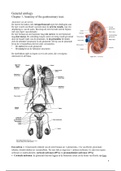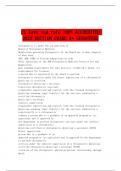Biological Science
Scott Freeman et al.
8th Edition
,Table of Contents
Chapter 01 Biology-The Study of Life 1
Chapter 02 Water and Carbon-The Chemical Basis of Life 23
Chapter 03 Protein Structure and Function 53
Chapter 04 Nucleic Acids and the RNA World 83
Chapter 05 An Introduction to Carbohydrates 108
Chapter 06 Lipids, Membranes, and the First Cells 130
Chapter 07 Inside the Cell 168
Chapter 08 Energy and Enzymes-An Introduction to Metabolism 195
Chapter 09 Cellular Respiration and Fermentation 228
Chapter 10 Photosynthesis 261
Chapter 11 Cell-Cell Interactions 293
Chapter 12 The Cell Cycle 318
Chapter 13 Meiosis 353
Chapter 14 Mendel and the Gene 387
Chapter 15 DNA and the Gene-Synthesis and Repair 432
Chapter 16 How Genes Work 458
Chapter 17 Transcription, RNA Processing, and Translation 484
Chapter 18 Control of Gene Expression in Bacteria 518
Chapter 19 Control of Gene Expression in Eukaryotes 533
Chapter 20 The Molecular Revolution-Biotechnology, Genomics, and New Frontiers 559
Chapter 21 Genes, Development, and Evolution 593
Chapter 22 Evolution by Natural Selection 613
Chapter 23 Evolutionary Processes 639
Chapter 24 Speciation 663
Chapter 25 Phylogenies and the History of Life 686
Chapter 26 Bacteria and Archaea 717
Chapter 27 Diversification of Eukaryotes 737
Chapter 28 Green Algae and Land Plants 761
Chapter 29 Fungi 794
Chapter 30 An Introduction to Animals 820
Chapter 31 Protostome Animals 850
Chapter 32 Deuterostome Animals 881
Chapter 33 Viruses 913
Chapter 34 Plant Form and Function 939
Chapter 35 Water and Sugar Transport in Plants 964
Chapter 36 Plant Nutrition 989
Chapter 37 Plant Sensory Systems, Signals, and Responses 1014
Chapter 38 Flowering Plant Reproduction and Development 1041
Chapter 39 Animal Form and Function 1068
Chapter 40 Water and Electrolyte Balance in Animals 1094
Chapter 41 Animal Nutrition 1123
,Chapter 42 Gas Exchange and Circulation 1165
Chapter 43 Animal Nervous Systems 1205
Chapter 44 Animal Sensory Systems 1249
Chapter 45 Animal Movement 1272
Chapter 46 Chemical Signals in Animals 1291
Chapter 47 Animal Reproduction and Development 1320
Chapter 48 The Immune System in Animals 1368
Chapter 49 An Introduction to Ecology 1403
Chapter 50 Behavioral Ecology 1428
Chapter 51 Population Ecology 1451
Chapter 52 Community Ecology 1480
Chapter 53 Ecosystems and Global Ecology 1511
Chapter 54 Biodiversity and Conservation Biology 1548
,______________________________________________________________________________________________
Test Bank - Biological Science, 8th Edition (Freeman, 2025)
Biological Science, 8e (Freeman)
Chapter 1 Biology: The Study of Life
1) Which of the following is NOT related to the five fundamental characteristics of life?
A) A bacterial cell divides to produce two cells.
B) Sugars are transported on carrier proteins into cells across the plasma membrane.
C) Sugars are broken down inside cells to produce energy.
D) The gene that specifies skin color in frogs is expressed during its development from a
tadpole into an adult frog.
E) Giraffes have longer necks so that they can reach food sources unavailable to other
animals.
Answer: E
Bloom’s Taxonomy: Applying/Analyzing
V&C Core Concept: EM
V&C Core Comp: PS
LO/EO: 1.1, 1.2; 1.1.1
Section: 1.1
2) Which of the following statements best describes a characteristic that may be associated with
both living organisms and nonliving matter?
A) Reproduction by passing on genetic information to future generations.
B) Composed of cells.
C) Capable of evolution.
D) Able to produce heat as a byproduct of chemical reactions.
Answer: D
Bloom’s Taxonomy: Remembering/Understanding
V&C Core Concept: EM
V&C Core Comp: PS
LO/EO: 1.1; 1.1.1
Section: 1.1.1
3) Which of the following statements is an inaccurate example of how the living organism in the
scenario exemplifies a characteristic feature of living organisms?
A) Photosynthetic bacteria meet the energy requirement, as they are able to convert energy
from sunlight into the chemical energy they store in sugars.
B) As humans, we meet the cell requirement because even though we are made of tissues
and organs, all of those components are made of specialized types of cells.
C) English bulldogs would meet both the information and ability to replicate requirements
______________________________________________________________________________________________
1|Page
,______________________________________________________________________________________________
Test Bank - Biological Science, 8th Edition (Freeman, 2025)
because when they have a litter of puppies, we would expect the progeny to be English
bulldogs due to their DNA from the parents.
D) Monarch butterflies meet the evolution requirement because each of them will look
different as adults (butterflies) than they do as juveniles (caterpillars) which demonstrate
their ability to change over time.
E) All of the statements are proper examples of how that organism exemplifies particular
characteristics of life.
Answer: D
Bloom’s Taxonomy: Applying/Analyzing
V&C Core Concept: EM
V&C Core Comp: PS
LO/EO: 1.1, 1.4; 1.1.1
Section: 1.1.1, 1.4.1
4) Pasteur’s experiments demonstrated that ________.
A) cells cannot survive in swan-necked flasks
B) in order to grow, cells need to be supplied with oxygen
C) spontaneous generation can only occur if nutrient broth is left open to the environment
D) sterilizing nutrient broth prevents spontaneous generation
E) preexisting cells present in the air can grow in sterilized nutrient broth
Answer: E
Bloom’s Taxonomy: Remembering/Understanding
V&C Core Concept: EM
V&C Core Comp: PS
LO/EO: 1.2; 1.2.2
Section: 1.2
5) Recall Pasteur’s experiment on spontaneous generation. If he had just warmed the
nutrient-rich broth, rather than boiled it, what would have been the likely outcome of his
experiment? Cells would ________.
A) not have appeared in either flask
B) have appeared in both flasks
C) have appeared in the swan-neck but not the straight-neck flask
D) have appeared in the straight-neck but not the swan-neck flask
Answer: B
Bloom’s Taxonomy: Applying/Analyzing
V&C Core Concept: EM
V&C Core Comp: PS
______________________________________________________________________________________________
2|Page
,______________________________________________________________________________________________
Test Bank - Biological Science, 8th Edition (Freeman, 2025)
LO/EO: 1.2; 1.2.2
Section: 1.2
6) Spontaneous generation ________.
A) was demonstrated to occur under normal laboratory conditions by Pasteur
B) apparently occurred at least once–when life on Earth began
C) occurs every time a new species evolves from a preexisting species
D) addresses the formation of new cells from existing cells
Answer: B
Bloom’s Taxonomy: Remembering/Understanding
V&C Core Concept: EM
V&C Core Comp: PS
LO/EO: 1.2; 1.2.3
Section: 1.2
7) Recall Pasteur’s experiment on spontaneous generation. What would the expected results
have been if Pasteur’s swan-neck experiment hypothesis were incorrect?
A) Cells would not have appeared in either flask.
B) Cells would have appeared in both flasks.
C) Cells would have appeared in the swan-neck but not the straight-neck flask.
D) Cells would have appeared in the straight-neck but not the swan-neck flask.
Answer: B
Bloom’s Taxonomy: Applying/Analyzing
V&C Core Concept: EM
V&C Core Comp: PS
LO/EO: 1.2; 1.2.2
Section: 1.2.1
8) Algae in the genus Caulerpa typically grow to a length of over half a meter and have structure
similar to stems, leaves, and roots. Reproduction occurs when adults produce sperm and eggs
that fuse to form offspring. Each adult Caulerpa consists of just a single cell, however. Which
of the following statements is TRUE?
A) Caulerpa violate the pattern component of the cell theory that all organisms consist of
cells.
B) Caulerpa violate the process component of the cell theory that all cells come from
preexisting cells.
______________________________________________________________________________________________
3|Page
,______________________________________________________________________________________________
Test Bank - Biological Science, 8th Edition (Freeman, 2025)
C) Caulerpa violate both the pattern and process components of the cell theory.
D) The existence of Caulerpa is consistent with the cell theory.
Answer: D
Bloom’s Taxonomy: Applying/Analyzing
V&C Core Concept: SF
V&C Core Comp: PS
LO/EO: 1.2; 1.2.1
Section: 1.2
9) Cells are ________.
A) only found in pairs because single cells cannot exist independently
B) limited in size to 200 and 500 micrometers in diameter
C) characteristic of eukaryotic but not prokaryotic organisms
D) characteristic of prokaryotic and eukaryotic organisms
Answer: D
Bloom’s Taxonomy: Remembering/Understanding
V&C Core Concept: SF
V&C Core Comp: PS
LO/EO: 1.2; 1.2.1
Section: 1.2
10) The cell theory states that all cells come from preexisting cells. If this is the case, why are the
cells in a multicellular organism so different from one another?
A) Cells in a multicellular organism are exposed to different energy sources allowing them
to develop different features.
B) During cell division, the genetic information that is replicated and passed onto the
daughter cells is different from the original cell.
C) The genetic information of each cell is copied and passed on to the daughter cells and the
molecular machinery that reads that genetic information is different in each cell.
D) The genetic information of each cell is copied and passed on to the daughter cells and the
molecular machinery makes copies of particular genes in different cells to generate
different features in those cells.
Answer: D
Bloom’s Taxonomy: Remembering/Understanding
V&C Core Concept: I
V&C Core Comp: PS
LO/EO: 1.3; 1.3.1
Section: 1.3
______________________________________________________________________________________________
4|Page
,______________________________________________________________________________________________
Test Bank - Biological Science, 8th Edition (Freeman, 2025)
11) The discovery of the structure of DNA was useful because ________.
A) it helped scientists understand how the information in DNA could be used to acquire
ATP for the cell
B) it inferred that genetic information flowed from messenger RNA to DNA to protein
C) it suggested a mechanism for copying and preserving the genetic material
D) it revealed how mRNA was used to make proteins
Answer: C
Bloom’s Taxonomy: Remembering/Understanding
V&C Core Concept: SF
V&C Core Comp: PS
LO/EO: 1.3; 1.3.1
Section: 1.3
12) Double helical DNA ________.
A) serves as a template for protein synthesis
B) is used to synthesize messenger RNA
C) contains two identical single strands of DNA
D) must be accurately copied to ensure variation in organisms
Answer: B
Bloom’s Taxonomy: Remembering/Understanding
V&C Core Concept: I
V&C Core Comp: PS
LO/EO: 1.3; 1.3.1
Section: 1.3
13) In comparison to eukaryotes, prokaryotes ________.
A) do not require ATP for energy while eukaryotes do require ATP
B) are more closely related to archaea than eukaryotes
C) lack a nucleus, while eukaryotes have a nucleus
D) are always single-celled while eukaryotes are always multicellular
E) have chromosomes composed of single-stranded DNA, while eukaryotes have
chromosomes composed of double-stranded DNA
Answer: C
Bloom’s Taxonomy: Remembering/Understanding
V&C Core Concept: SF, E
______________________________________________________________________________________________
5|Page
,______________________________________________________________________________________________
Test Bank - Biological Science, 8th Edition (Freeman, 2025)
V&C Core Comp: PS
LO/EO: 1.5; 1.5.2
Section: 1.5
14) Which of these provides evidence of the common ancestry of all life?
A) Ubiquitous use of catalysts by living systems
B) Near universality of the genetic code
C) Structure of the nucleus
D) The flow of genetic information from DNA to RNA to protein
E) The directionality of protein synthesis
Answer: B
Bloom’s Taxonomy: Applying/Analyzing
V&C Core Concept: SF, E, I
V&C Core Comp: PS
LO/EO: 1.5; 1.5.1
Section: 1.5
15) Cotton-topped tamarins are small primates with tufts of long white hair on their heads. While
studying these creatures, you notice that males with longer hair get more opportunities to mate
and father more offspring. To test the hypothesis that having longer hair is adaptive in these
males, you should ________.
A) test whether other traits in these males are also adaptive
B) look for evidence of hair in ancestors of tamarins
C) determine if hair length is heritable
D) test whether males with shaved heads are still able to mate
Answer: C
Bloom’s Taxonomy: Applying/Analyzing
V&C Core Concept: E
V&C Core Comp: PS
LO/EO: 1.4; 1.4.2
Section: 1.4
The following experiment is used for the corresponding question(s).
A researcher discovered a species of moth that lays its eggs on oak trees. Eggs are laid at two
distinct times of the year: early in spring when the oak trees are flowering and in midsummer
when flowering is past. Caterpillars from eggs that hatch in spring feed on oak flowers and
look like oak flowers. But caterpillars that hatch in summer feed on oak leaves and look like
oak twigs.
How does the same population of moths produce such different-looking caterpillars on the
same trees? To answer this question, the biologist caught many female moths from the same
______________________________________________________________________________________________
6|Page
, ______________________________________________________________________________________________
Test Bank - Biological Science, 8th Edition (Freeman, 2025)
population and collected their eggs. He put at least one egg from each female into eight
identical cups. The eggs hatched, and at least two larvae from each female were maintained in
one of the four temperature and light conditions listed below.
Temperature Day Length
Springlike Springlike
Springlike Summerlike
Summerlike Springlike
Summerlike Summerlike
In each of the four environments, one of the caterpillars was fed oak flowers; the other, oak
leaves. Thus, there were a total of eight treatment groups (4 environments × 2 diets).
16) Refer to the figure above. Which one of the following is NOT a plausible hypothesis to
explain the differences in caterpillar appearance observed in this population?
A) The longer day lengths of summer trigger the development of twiglike caterpillars.
B) The cooler temperatures of spring trigger the development of flowerlike caterpillars.
C) Differences in air pressure, due to differences in elevation, trigger the development of
different types of caterpillars.
D) Differences in diet trigger the development of different types of caterpillars.
Answer: C
Bloom’s Taxonomy: Applying/Analyzing
V&C Core Concept: SF, E
V&C Core Comp: PS
LO/EO: 1.4; 1.4.2
Section: 1.4
17) Refer to the figure above. In every case, caterpillars that feed on oak flowers looked like oak
flowers. In every case, caterpillars that were raised on oak leaves looked like twigs. These
results support which of the following hypotheses?
A) The longer day lengths of summer trigger the development of twiglike caterpillars.
B) Differences in air pressure, due to elevation, trigger the development of different types
of caterpillars.
C) Differences in diet trigger the development of different types of caterpillars.
D) The differences are genetic. A female will produce either all flowerlike caterpillars or all
twiglike caterpillars.
Answer: C
Bloom’s Taxonomy: Applying/Analyzing
V&C Core Concept: SF, E
______________________________________________________________________________________________
7|Page





